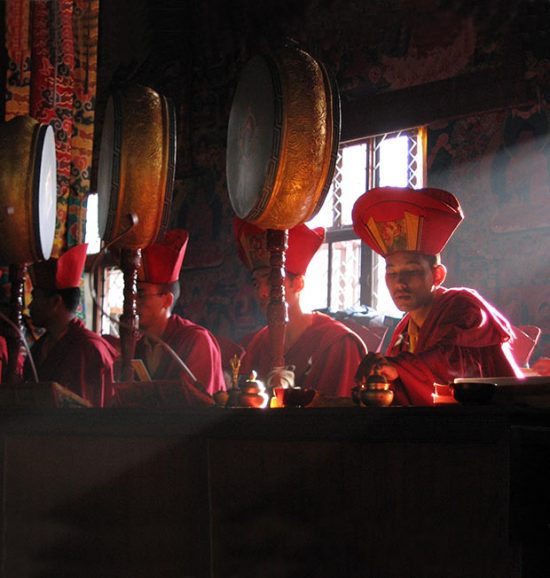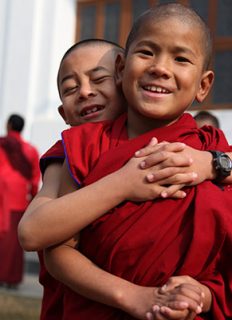A day in the life of a monk

In typical Tibetan parlance, the elements of monastic life are explained by means of various lists of three. The monk’s or nun’s personal practice should be centered on study, reflection, and meditation. His or her ideal qualities are intellectual mastery, behavioral discipline, and good works. The Mahayana commitment to the service of others is epitomized by the pursuits of instruction, written composition, and debate. The community as a whole divides its human resources between those striving in the wheel of practice, the wheel of study, and the wheel of tangible labor. Combined, these lists present a rich image of the ideals sought for in monastic life, and indeed draw to the fore the Mahayana Buddhist maxim of avoiding the extremes of participation in and total rejection of the world. It is largely from within these theoretical structures that the practical elements of monastic life have traditionally evolved in the Buddhist Himalayas and continue to evolve in modern times.

Of the 300 some monastics residing at Ka-Nying Shedrub Ling, most hail from diverse ethnic and linguistics groups from across the Himalayan geographic area, from Brahmans to Sherpas. As is the tradition, most enter the monastery at a young age because their families see offering a son or daughter to pursue religion as a tremendous source of merit, and because many children indeed show an interest in pursuing such a life.

Upon entering the monastery, the young monk immediately embarks on a long course of study. The details of this program as it currently exists can be found here. Training is intense, as is only fitting for the idealized expectations expressed above. Monks who have completed the nine year shedra course will generally take up the duties of teaching and managing the practical affairs of the monastery. Others will at some point opt for retreat, after which they will spend their personal time focused on meditation and the performance of ritual.
As monks of different ages and levels are involved in a diversity of activities, it is hard to present a universalized, typical day. On the whole, however, a monk will rise around 5:00 a.m. and attend the morning puja. Here the liturgies of Shakyamuni Buddha and the 16 Sthaviras, Guru Padmasambhava, Vajrasattva, and Tara are recited. After a breakfast of spicy potatoes and beaten rice, the monks begin their individual activities focused on study, meditation, or labor. After a lunch of rice and daal at 11:30, they continue their duties until 4:00, when the Vajrakilaya and Dharmapala pujas are conducted. Evening is again a time for study or practice, which usually extends until 10:00 or 11:00. Although there are many possible variations to this basic template, the morning and evening pujas are in many ways the lynchpins of the monastic schedule.

The ebb and flow of the cycle of yearly activities perhaps better illustrates the way in which monastic life unifies study, practice, and labor. Regular classes are conducted for eight months of the year, from approximately May to December. The traditional monastic rains retreat (Skt. varṣa) is a month and a half of particularly intensive study. It is concluded with a show of the students’ learning in the form of speeches and debates.

After exams conclude in December, there begins a four month that is a time for both vacation and major collective rituals. Many monks use this time to attend teachings or empowerments in India, return to teach in their homelands, or conduct a small personal retreat. A number of major rituals involving the entire monastery are also conducted during this four month period. Most notably are the two “drubchens,” in which a given Vajrayana ritual is conducted for a period of nine days, both day and night. These events require a large scale coordination of specialists and helpers, and many local and foreign Buddhists also attend. They therefore represent some of the most important events for the monastery. Other such major activities, such as empowerments or special teachings, also occur regularly; they have no specified time, however.